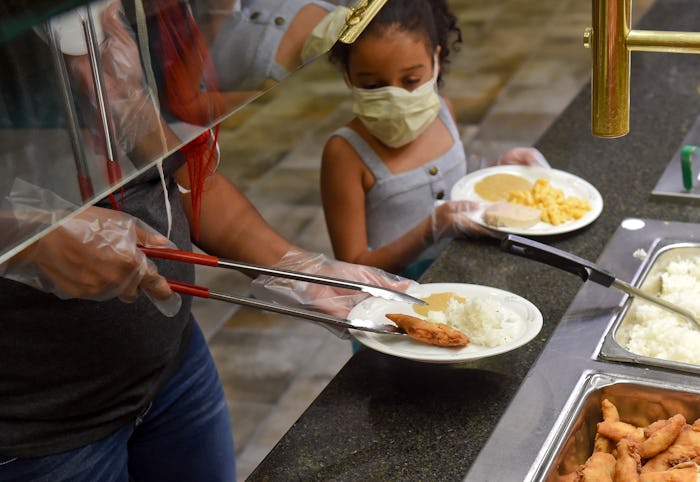Life

Is It Safe To Eat At A Restaurant Yet? Here's What The Experts Say
After months of preparing the majority of your family's meals, day in and day out, the idea of eating at a restaurant probably sounds pretty amazing right now. Depending on where you live, your options might be limited to outdoor seating only — but as long as you're not doing the dishes, who cares? There's only one concern holding you back, and unfortunately, it's a big one: Is it safe to eat at a restaurant yet?
“Just because restaurants are now opening doesn’t mean you should necessarily go,” pediatrician Dr. Alison Mitzner M.D. tells Romper in an email. “We know the longer the interaction, the more risk. You need to really think about how important it is for you to go out to eat.” It's important to consider if anyone is high-risk in your family or social circle before going out, she adds, and to check the case count in your area. “If cases are growing each day, use caution and consider holding off,” she says.
Eating outside is unequivocally safer than dining inside, Dr. Mitzner adds. Still, according to The Centers for Disease Control and Prevention (CDC), the lowest risk dining options are drive-through, delivery, take-out, and curb-side pick up. If you do choose to eat at a restaurant with outdoor seating, make sure that the tables are at least six feet apart and that the staff is wearing masks. (Patrons of the restaurants should technically also be in masks until they are eating, so keep covered while you wait for your food.) And bear in mind that if you're dining with children, they're going to have to stay seated at the table (ideally masked).
Reusable items should be “single serve use only,” Niket Sonpal M.D., New York-based internist and gastroenterologist, tells Romper. That means there should not be shared condiments or salt and pepper shakers on the table, in fact, there shouldn’t even be paper or plastic menus. Many restaurants will have a chalkboard where menu options are listed for everyone to see, or they may ask customers order online (so make sure your smartphone is charged or call in your order beforehand). You will have to be hyper-vigilant about everything you touch, and if you have to physically sign a receipt, a safe restaurant will designate the ‘clean’ pens from the ‘dirty’ pens.
When deciding whether or not to go to a restaurant, CNN recommended asking these three questions: “Does the service allow you to maintain social distancing? Is drive-through an option? Are frequently touched surfaces disinfected?”
The restaurant should also look different. “If it looks the same you may want to reconsider. The tables should be six feet apart, masks should be worn by all employees. Check to see that they have hand sanitizer available for workers and customers,” Dr. Mitzner says. “Ensure there is frequent cleaning between customers, and that they're disinfecting all of the [tables and chairs] where you are to be seated.” This may not seem particularly relaxing, but you can also make the experience safer by making it quick, she adds.
Dr. Mitzner says she personally would avoid indoor dining; however, if you have your mind made up about eating inside, you can reduce the risk by ensuring the restaurant is taking safety guidelines seriously. There should be open windows, and no one should be waiting inside for a table. Buffets are a definite no-go and the restaurant should not be tight (so you don't have to squeeze past anyone on your way to the bathroom, for example). In fact, you may want to avoid the bathroom if you can help it. "It can be harder to maintain physical distance when using public restrooms, especially in a crowded setting,” Susan Amirian, a research scientist at the Texas Policy Lab, told Vox.
Ultimately, you have to trust your instinct and use your best judgment when deciding if you want to eat at a restaurant. If you do decide that it's worth it, pick an outdoor table, keep your mask on until it's time to eat, sanitize your hands... and try to enjoy the experience because you'll be back in your own kitchen before you know it.
If you think you’re showing symptoms of coronavirus, which include fever, shortness of breath, and cough, call your doctor before going to get tested. If you’re anxious about the virus’s spread in your community, visit the CDC for up-to-date information and resources, or seek out mental health support. You can find all of Romper’s parents + coronavirus coverage here.
Experts:
Dr. Alison Mitzner, M.D., pediatrician
Niket Sonpal M.D., New York-based internist and gastroenterologist
This article was originally published on